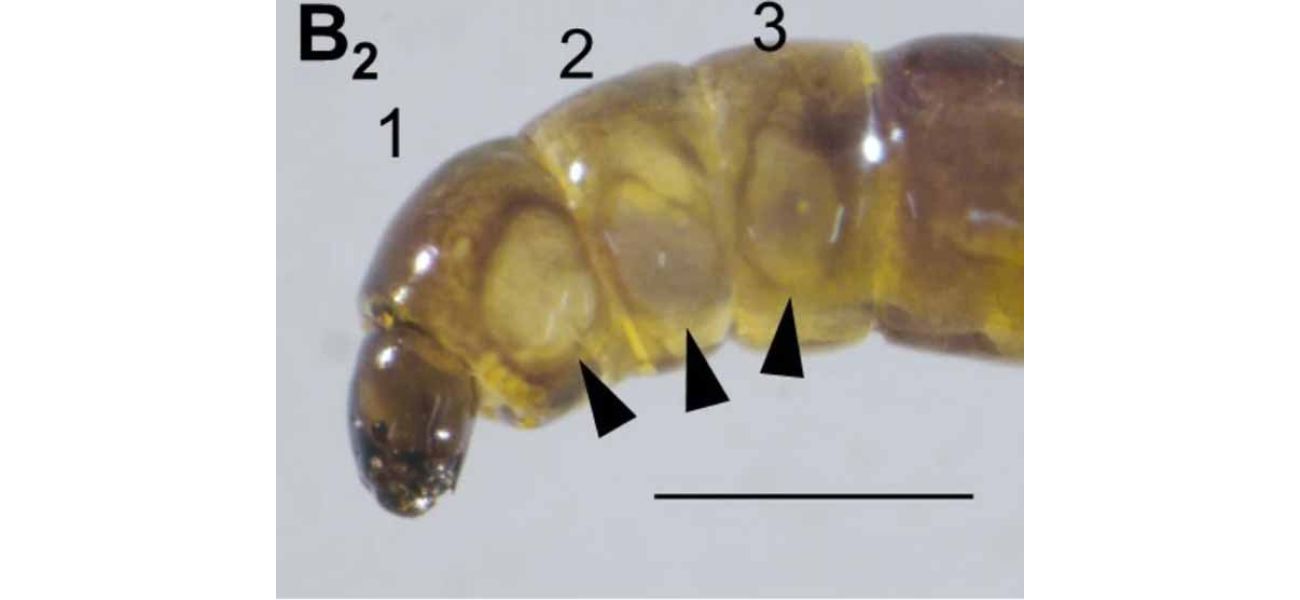Antarctica's sole native insect may reveal insights for long-distance space exploration.
Belgica antarctica midge is a successful species.
February 12th 2025.

Have you ever wondered how the Belgica antarctica midge is able to survive in the harsh conditions of Antarctica? As the only native insect on the continent, this tiny creature could hold the key to our future space travel. Researchers have discovered that the midge has a unique way of dealing with the freezing temperatures - it essentially shuts itself off during the coldest seasons.
This discovery could have major implications for humans, particularly in the field of cryopreservation. This is the process of freezing living organisms at extremely low temperatures, in order to bring them back to life in the future. Imagine if we could use this technology to travel to Mars and beyond, exploring the depths of space with ease. The concept of freezing humans for long journeys is not new - it has been featured in science fiction films like Alien, where the crew enters tube-like chambers called 'Hypersleep' to survive their journey.
While cryopreservation is already used for some tissues, such as embryos used in IVF, the idea of reviving frozen human beings is still far from reality. However, the Belgica antarctica midge has a survival mechanism that has never been documented before. Researchers found that the frozen midge larvae were able to survive for 32 days in simulated overwintering conditions. This remarkable feat could provide valuable insights for humans trying to adapt to extreme environments.
An international team of scientists, led by researchers at Osaka Metropolitan University in Japan, studied the midge and its two-year life cycle. They discovered that the flightless insect has two periods of dormancy - 'quiescence' in its first year and 'obligate diapause' in its second. During these periods, the midge essentially shuts down its bodily functions, waiting for the weather to improve before becoming active again.
The first period of dormancy is a response to immediate adverse conditions, while the second is a fixed point in the midge's life cycle. These periods of inactivity allow the midges to survive the harsh Antarctic winters and emerge as adults when the summer arrives. This timing mechanism is crucial for their survival, as the adult midges only have a few days to find a mate and reproduce.
Dr. Mizuki Yoshida, one of the researchers involved in the study, explained, "As adults, they have only a few days of life and need to find a mate, so this timing mechanism is key to their survival." Professor Shin Goto added, "We determined that for the Antarctic midge, the obligate diapause ends with the onset of low temperatures in winter, so that the larvae all pupate at the same time and emerge as adults at the same time."
This unique adaptation is not found in any other known creature, but the researchers believe that other insects living in extreme environments, such as the Arctic and high altitudes, may have similar survival strategies. In their six-year study, the research team reared midges to learn more about their environmental coping mechanisms and how they could be applied to other species living in extreme cold.
In conclusion, the Belgica antarctica midge has shown us that even in the harshest of environments, life can find a way to adapt. Its ability to survive the freezing temperatures of Antarctica could hold valuable lessons for humans as we continue to explore the depths of space. Who knows, one day we may be able to use cryopreservation to travel to other planets and beyond, just like the resilient midge.
This discovery could have major implications for humans, particularly in the field of cryopreservation. This is the process of freezing living organisms at extremely low temperatures, in order to bring them back to life in the future. Imagine if we could use this technology to travel to Mars and beyond, exploring the depths of space with ease. The concept of freezing humans for long journeys is not new - it has been featured in science fiction films like Alien, where the crew enters tube-like chambers called 'Hypersleep' to survive their journey.
While cryopreservation is already used for some tissues, such as embryos used in IVF, the idea of reviving frozen human beings is still far from reality. However, the Belgica antarctica midge has a survival mechanism that has never been documented before. Researchers found that the frozen midge larvae were able to survive for 32 days in simulated overwintering conditions. This remarkable feat could provide valuable insights for humans trying to adapt to extreme environments.
An international team of scientists, led by researchers at Osaka Metropolitan University in Japan, studied the midge and its two-year life cycle. They discovered that the flightless insect has two periods of dormancy - 'quiescence' in its first year and 'obligate diapause' in its second. During these periods, the midge essentially shuts down its bodily functions, waiting for the weather to improve before becoming active again.
The first period of dormancy is a response to immediate adverse conditions, while the second is a fixed point in the midge's life cycle. These periods of inactivity allow the midges to survive the harsh Antarctic winters and emerge as adults when the summer arrives. This timing mechanism is crucial for their survival, as the adult midges only have a few days to find a mate and reproduce.
Dr. Mizuki Yoshida, one of the researchers involved in the study, explained, "As adults, they have only a few days of life and need to find a mate, so this timing mechanism is key to their survival." Professor Shin Goto added, "We determined that for the Antarctic midge, the obligate diapause ends with the onset of low temperatures in winter, so that the larvae all pupate at the same time and emerge as adults at the same time."
This unique adaptation is not found in any other known creature, but the researchers believe that other insects living in extreme environments, such as the Arctic and high altitudes, may have similar survival strategies. In their six-year study, the research team reared midges to learn more about their environmental coping mechanisms and how they could be applied to other species living in extreme cold.
In conclusion, the Belgica antarctica midge has shown us that even in the harshest of environments, life can find a way to adapt. Its ability to survive the freezing temperatures of Antarctica could hold valuable lessons for humans as we continue to explore the depths of space. Who knows, one day we may be able to use cryopreservation to travel to other planets and beyond, just like the resilient midge.
[This article has been trending online recently and has been generated with AI. Your feed is customized.]
[Generative AI is experimental.]
0
0
Submit Comment





